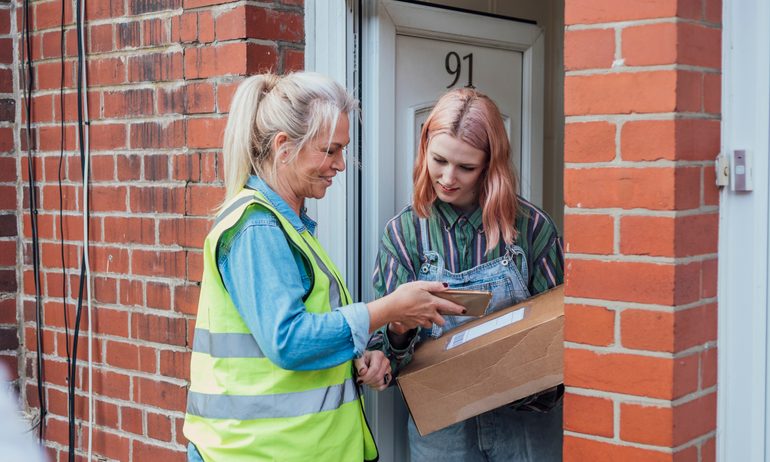Data: Americans Spending Less Time, More Money on Shopping

Many, or all, of the products featured on this page are from our advertising partners who compensate us when you take certain actions on our website or click to take an action on their website. However, this does not influence our evaluations. Our opinions are our own. Here is a list of our partners and here's how we make money.
Buying things takes less time these days — you can have your week’s groceries, a new outfit and a used car headed to your front door in a matter of hours, thanks to technology. But this convenience comes with a price.
New data from the Bureau of Labor Statistics reveals fewer people are shopping on any given day than they were 20 years ago, and those who do are spending less time on the task. However, we’re spending more money, likely because we no longer have to even open our wallets, let alone leave the house, to buy all of the things we need or desire.
While our efforts have eased, online shopping has helped drive a dramatic increase in retail spending over the past few decades. Whether it’s your groceries or wardrobe, you’ve likely succumbed to more impulse buys because it’s just so darned easy.
We’re spending less time shopping
From 2003 to 2023, the share of people shopping on any given day fell from about 46% to just under 40%, according to the American Time Use Survey, an annual release from the Bureau of Labor Statistics that examines how we spend our hours.
Further, when we do shop, we’re being a little quicker about it. The amount of time spent by those shopping on a given day fell by about six minutes during the 20-year period.
One way of looking at this, in terms of efficiency, is that we’re getting better at shopping — we can do what we need to in less time, on a fewer number of days. However, efficiency implies we’re getting greater returns on our efforts. In this case, it may only be a little time back, because we’re actually buying more.
Our efficiency is costing us; online shopping likely to blame
Retail sales data, a measure that gets close to the definition of shopping (though it doesn’t include shopping for services, which the time use survey does) indicates a 37% increase — from $437 billion per month in the first quarter of 2003 to $597 billion 20 years later, after adjusting for inflation. And one category within this data has seen far more dramatic growth.
Over the past two decades, we’ve seen online shopping go from novelty to commonplace. Spending on “electronic shopping and mail order houses” — the quaint-sounding U.S. Census Bureau category that applies to your late-night, couch-side shopping sprees — has grown from about $17 billion to $99 billion since 2003, after adjusting for inflation. That’s an increase of about 470%. And the inflation adjustment means we’re not just spending more, we’re buying more “stuff.” Turns out, when you don’t have to leave the house or even get dressed to go find a new hat, or three, you’re more likely to buy them.
Slowing down the shopping process
Personally, as I prepare to take a vacation, I know for a fact I’m purchasing more items for my trip simply because it’s convenient. I’m ordering two scarves to compare and keep the one I want; blister balm and a few kinds of bandages for the inevitable foot pain I’ll encounter walking around; travel-size everything to ensure I don’t have to check a bag; and a few new outfits to break in while abroad. Twenty years ago, this would have likely required multiple trips to multiple stores, and I wouldn’t have made all of these purchases. But I do now because I can. And it’s this frictionless shopping experience that makes it easy to overspend.
It’s one thing to shop within your means for the things you need, and another to be hit with pangs of guilt when the packages pile up outside your door. If you find you’re buying more stuff than you’d like, introducing speed bumps to the otherwise seamless process could help:
Shop with intent. Browsing with no purpose in mind can lead to purchases of things you don’t really need. Before you navigate to your favorite retailer just to "see what’s new,” ask yourself what you’re really looking for. If there’s no pressing need for new pants or yet another basic white tee, maybe you wait until there is a definitive need or reason to shop before placing yourself in the center of your favorite virtual stores.
Set shopping times, and avoid impulse buys. Limit the days or times of day when you allow yourself to shop. While it’s not the same as having to leave the house, find parking and contend with crowds, limiting yourself to certain shopping periods can help focus your objectives. Not to mention, it builds in a waiting period when impulses hit.
Instate a holding period, when possible. Filled your cart? Great, now walk away. Take a timeout between the selection and buying processes. This pause can help you gain perspective on potential purchases, and you may delete a few things before checking out. Some retailers are onto this tactic, however, and give you a limited amount of time before they empty your cart for you. Don’t let their timer rush a buying decision you aren’t absolutely certain about.
Review your purchases on a regular basis. Once a week or once a month, sit down and look at your shopping from the prior period. What did you buy? What did you end up returning? What should you have returned but didn’t? Reflecting on your most recent purchases can help you spot patterns or spending categories that you may be able to work on.

